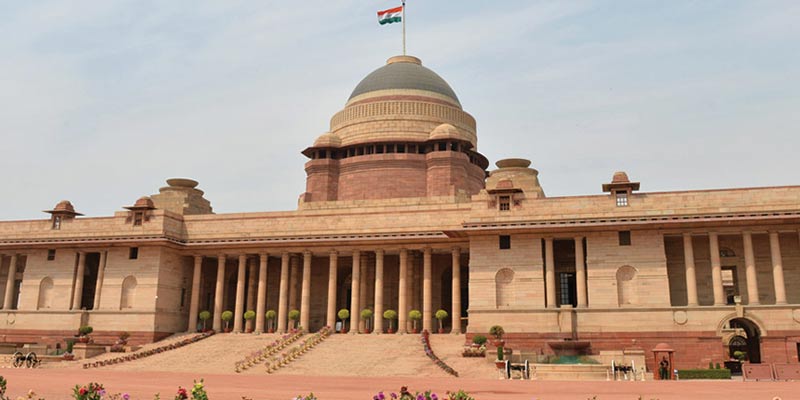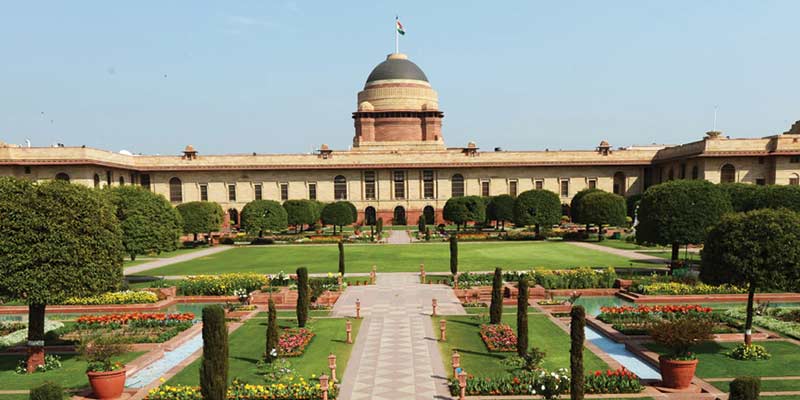- India
- Jun 10
Explainer / Presidential election in India
• The Election Commission has announced that the 16th presidential polls will be held on July 18 in which electors comprising elected MPs and MLAs will vote to elect Ram Nath Kovind’s successor.
• In 2017, the presidential polls were held on July 17 and the counting took place on July 20. Kovind defeated former Lok Sabha speaker and opposition candidate Meira Kumar by nearly 3,34,730 value votes in the polls.
• Kovind’s term ends on July 24.
• The nominations can be filed after the issue of notification on June 15 and can be filed till June 29.
• Scrutiny of nominations will take place on June 30 and the last date for withdrawal of nominations will be July 2.
Election process
• The Office of the President is the highest elective office in the country.
• Under Article 324 of the Constitution of India, the authority to conduct elections to the Office of President is vested in the Election Commission of India.
• As per Article 62 of the Constitution of India, an election to fill the vacancy caused by the expiration of the term of office of the outgoing President is required to be completed before the expiration of the term.
• Under the provisions of sub-section (3) of Section 4 of the Presidential and Vice-Presidential Elections Act, 1952, the notification calling the election to the office of the President can be issued by the Election Commission on any day within the period of sixty days before the expiry of the term of office of the outgoing President. The election schedule shall be so fixed, that the President-elect is able to enter upon his office on the day following the expiry of the term of the outgoing President.
• As per the Article 54 of the Constitution the President is elected by the members of the electoral college consisting of elected members of both Houses of Parliament, and elected members of the legislative Assemblies of all states including the National Capital Territory of Delhi and the Union Territory of Puducherry.
• The nominated members of either Rajya Sabha and Lok Sabha or legislative Assemblies of the states are not eligible to be included in the electoral college and therefore, they are not entitled to participate in the election.
• Similarly, members of the Legislative Councils are also not electors for the presidential election.
• The total number of electors for the election will be 4,809 — 776 MPs and 4,033 MLAs.
Value of the vote
• The total value of vote of electors for the presidential election 2022 is 10,86,431.
• Each elector is assigned a vote value, depending on the population of respective states.
• A value of vote is assigned to the vote of MP and MLA based on the population of a state and the number of legislators elected. The population for each state is per the 1971 Census.
• The value of the vote of each member of a state legislative Assembly is calculated by dividing the population of the state concerned (as per 1971 Census) by the total number of elected members of the Assembly, and then further dividing the quotient by 1,000.
• The value of vote of the MP is derived by adding the values of the MLA votes and then dividing it by the total number of elected Lok Sabha and Rajya Sabha members.
• The value of the vote of a Member of Parliament has gone down to 700 from 708 in the Presidential poll due to the absence of a legislative assembly in Jammu & Kashmir.
• It is not for the first time that legislators of a state Assembly will not be able to participate in the presidential elections. In 1974, the 182-member Gujarat assembly was dissolved in March following the Navnirman Andolan and could not be constituted before the presidential election in which Fakruddin Ali Ahmed was elected.
• The value of the vote of a Member of Parliament was fixed at 708 since the 1997 presidential election.
• The value of vote of an MP for the first presidential election in 1952 was 494. It increased marginally to 496 in the 1957 presidential election, followed by 493 (1962), 576 (1967 and 1969).
• The presidential elections were held in 1969 due to the death of President Zakir Hussain on May 3, 1969.
• In the 1974 presidential election, the value of vote of an MP was 723. It has been fixed at 702 for the presidential elections from 1977 to 1992.
• In states, the value of vote of each MLA varies in different states. In Uttar Pradesh, the value of vote of each MLA stands at 208, followed by 176 in Jharkhand and Tamil Nadu. In Maharashtra, it is 175. In Sikkim, the value of vote per MLA is seven, while it is nine in Nagaland and eight in Mizoram.
Qualifications required by a candidate
Under Article 58, a candidate should fulfill the following eligibility conditions to contest the election to the Office of President:
i) Must be a citizen of India.
ii) Must have completed 35 years of age.
iii) Must be eligible to be a member of the Lok Sabha.
iv) Should not be holding any office of profit under the government of India or the government of any state or under any local or other authority subject to the control of any of the said governments.
However, the candidate may be holding the office of President or Vice-President or governor of any state or ministers of the Union or any state and shall be eligible to contest election.
• A candidate can file a maximum of four nomination papers. The security deposit for the election is Rs 15,000, which is required to be made along with the nomination paper, or should be deposited in Reserve Bank or a government treasury under the relevant Head of Accounts for the purpose, prior to filing of nomination.
• A nomination paper of a candidate has to be subscribed by at least 50 electors as proposers and by at least other 50 electors as seconders.
• For a candidate to get elected, she/he has to secure at least 50 per cent plus one vote.
Voting process
• The Election Commission, in consultation with the central government, appoints the Secretary General of Lok Sabha and Rajya Sabha, by rotation, as the Returning Officer. Accordingly, the Secretary General, Rajya Sabha will be appointed as the Returning Officer for the present election to the Office of the President.
• Voting for the presidential election will take place in Parliament and the premises of state Assemblies, while Rajya Sabha Secretary-General will be the returning officer.
• Normally, MPs cast their vote in Parliament and MLAs in their respective state assemblies.
• If there is an emergency, the EC would need to be informed 10 days in advance for MPs to vote in a state assembly or for MLAs to vote in Parliament complex.
• Article 55(3) of the Constitution provides that the election shall be held in accordance with the system of proportional representation by means of the single transferable vote and the voting at such election shall be by secret ballot.
• Political parties cannot issue any whip to their MPs and MLAs in the matter of voting in the presidential election.
• For marking the vote, the Commission will supply particular pens. The pen will be given to the electors in the polling station by the designated official when the ballot paper is handed over. Electors have to mark the ballot only with this particular pen and not with any other pen. Voting by using any other pen shall lead to invalidation of the vote at the time of counting.
Term of Office of President
The President shall hold office for a term of five years from the date on which he enters upon his office:
Provided that-
a) The President may, by writing under his hand addressed to the Vice-President, resign his office.
b) The President may, for violation of the Constitution, be removed from office by impeachment in the manner provided in Article 61.
c) The President shall, notwithstanding the expiration of his term, continue to hold office until his successor enters upon his office.
Manorama Yearbook app is now available on Google Play Store and iOS App Store


